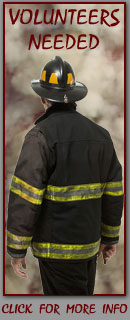Fire Apparatus
Fire Engines are used to pump water to a fire through the use of hoses. Water is commonly accessed via a water reservoir on the Fire Engine or via a connection to a fire hydrant system. Other types of water reserves are used, dependent on the fire situation.
Fire Trucks are used to haul fire fighting equipment; such as ladders, Halligans, fire extinguishers, fans, ventilation saws, SCBA and other devices used by firefighters. Trucks do not carry water.
A Ladder Truck is used to assist fire fighters with gaining height beyond what a hand held ladder can provide. The extension provides access for rescue and a higher vantage point for fighting a fire.
Rescue Truck provides specialized tools for situations such as auto accidents.
Turnout Gear refers to the protective clothing worn by firefighters. The clothing is made of several layers of fire resistant fabrics. The National Fire Protection Association ( www.npfa.org ) sets the standards for firefighting protective clothing.
This clothing is typically kept by each members locker in the firehouse in a position for quick access. Pants and boots are arranged so a firefighter only needs to step into the boots and pull up the suspenders.
Think a firefighter ' s helmet is the only apparatus used to protect a firefighters head? Think again!
Flash Hoods and Masks are worn in addition to the helmet. The hoods provide protection for ears, neck and areas of the face that are not covered by a mask, which is the breathing apparatus used by firefighters.
Helmets are the most recognizable symbol associated with a firefighter. When someone thinks of a firefighter, a helmet usually pops into their mind. Helmets identify the Fire Squad and the individual. Firefighters are given a line number which is displayed in the front of the helmet. This important device is used to protect a firefighter's head from falling debris and water that can reach scalding temperatures. The shape of the helmet allows for this extremely hot water to run off the firefighter and not down the back of the neck or face.
PASS (Personal Alarm Safety System) device
In addition to providing protection to firefighters against the physical elements, it is extremely important to know where your firefighters are during a crisis and knowing they are alert and responsive. PASS devices are attached to each firefighter's turnout gear and are activated before entering a fire. How does it work? Once activated, a firefighter must keep moving to keep the device quiet. If the firefighter stops moving an alarm sounds and a light is activated after 30 seconds alerting the Command Center of a fallen, trapped or unresponsive firefighter. The alarm gets louder every 5 seconds. The sound and light allows other firefighters to locate and rescue the unresponsive firefighter.


